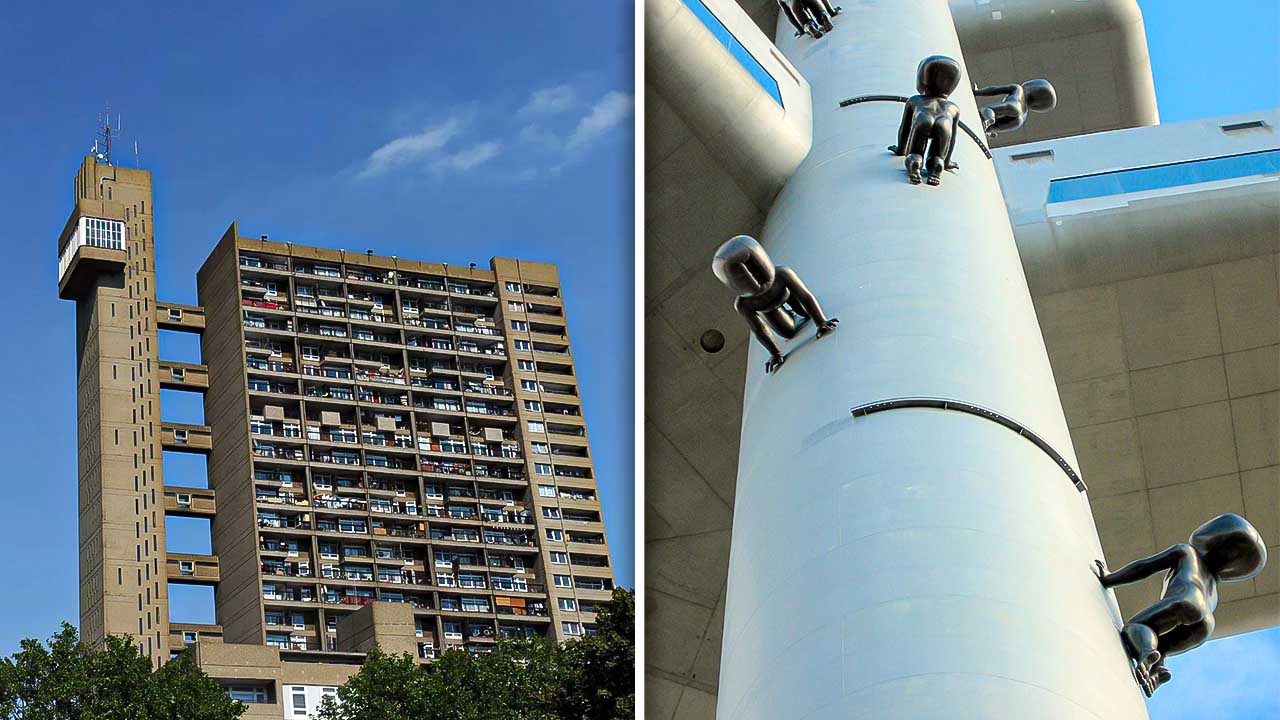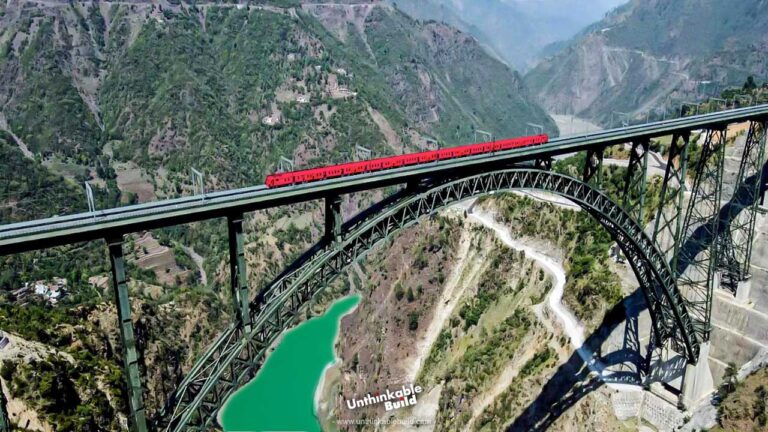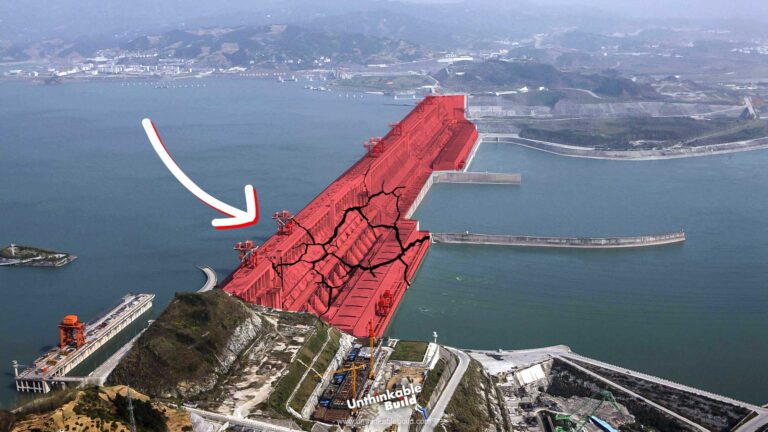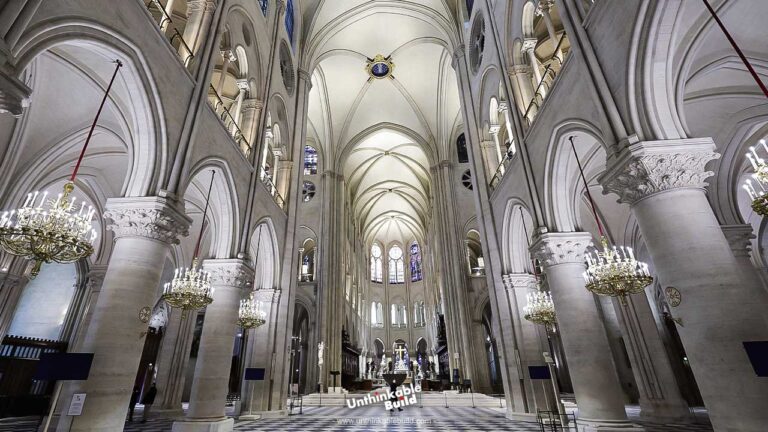The Beauty and Beast of Architecture: A Journey Through the World’s Most Controversial Buildings
Have you ever encountered a building so unattractive that it made you pause and wonder, ‘What were the architects thinking?’ Whether it’s in your hometown, glimpsed on television, or spotted on social media, the existence of remarkably unattractive structures is an intriguing reality. These architectural marvels often carry with them a message, whether it’s about aesthetics, engineering innovation, financial statements, religious devotion, or a testament to the architect’s own creative vision. In the world of architecture, it’s worse for a building to be ignored than to be called ugly.
Many architects and builders think it’s worse to be plain or boring than to risk making something that some people might find ugly. However, when a building is aesthetically displeasing, it’s the people who see it every day – both locals and visitors – who have to deal with it.
we discuss the buildings that are so surprisingly ugly, you’ll wonder how they were even built. But it’s important to remember that what looks beautiful is different for everyone. What some people think is really ugly, others might see as a great work of art. Come with us as we explore these buildings, where it’s hard to tell the difference between what’s beautiful and what’s not.
Also Read: Ben Gurion Canal will Drastically Reshape Regional Power Dynamics
Ryugyong Hotel
The Ryugyong Hotel in North Korea, often called the “Hotel of Doom,” is a very large and tall building in Pyongyang. It’s famous, but not for good reasons. The hotel was started in 1987, and the plan was to make it really big and fancy. They wanted it to be taller than the Eiffel Tower, with 3,000 Rooms and five restaurants that go around in circles. But even though it’s been more than 30 years, the hotel has never opened. It’s just standing there empty, which is why the Guinness World Records once called it “the world’s tallest unoccupied building.” So, the Ryugyong Hotel is well-known, but people usually talk about it because it’s a big building that was never finished and nobody stays there.
The Elephant Building
The Elephant Building, located in Bangkok, Thailand, is a distinctive architectural marvel completed in 1997. Known for its unique design, the building is intended to resemble an elephant, one of Thailand’s national symbols. However, whether it successfully captures the essence of an elephant is a subject of debate. This towering structure, while being one of the most iconic features of Bangkok’s skyline, has also earned a place among the World’s Ugliest Buildings. The building’s design, which attempts to mimic an elephant’s shape with a trunk-like tower and two large, protruding structures representing ears, has drawn mixed reactions. Some view it as a creative and bold architectural statement, while others struggle to see the intended elephantine resemblance. Regardless of the differing opinions on its aesthetics, the Elephant Building remains an unmissable landmark in Bangkok, symbolizing the city’s modernity and unique architectural choices.
Zizkov Television Tower
In Prague, the capital of the Czech Republic, a city celebrated for its stunning architecture, stands the Zizkov Television Tower, an edifice that sharply contrasts with the surrounding historical beauty. Completed in 1992, this tower is far from being regarded as a traditional architectural jewel. One of its most striking, and perhaps unsettling, features is the series of sculptures of Babies Crawling Up The Tower. These unusual additions, the work of Czech artist David Černý, give the tower a distinctive, if not bizarre, appearance. The Zizkov Television Tower, towering over the city’s traditional Baroque and Gothic Architecture, has often been criticized for its stark, futuristic design, and is frequently listed among the ugliest buildings in the world. Despite this, it has become a unique landmark in Prague, offering panoramic views of the city and serving as a curious example of modern architectural experimentation.
Boston City Hall
Boston City Hall, located in Boston, Massachusetts, is a striking example of brutalist architecture, a style known for its bold, unadorned structures. Completed in 1968, this building might have been seen as modern and innovative during its time, but today it often faces criticism for its stark and somewhat bleak appearance. The building’s heavy use of concrete and its imposing, block-like structure make it stand out, but not always favorably, against the more traditional and ornate architecture of the city. The design, characterized by geometric shapes and an almost fortress-like exterior, has been described as dreary and out of place by many. Despite these critiques, Boston City Hall remains an important piece of architectural history, embodying the ideals and aesthetics of the brutalist movement and serving as a prominent landmark in the city’s landscape.
Federation Square
Federation Square, nestled in the heart of Melbourne, Australia, represents a unique blend of cultural and public spaces. This mixed-use development, unveiled in 2002, has sparked considerable debate over its architectural style. The design of Federation Square is a complex array of disjointed shapes and surfaces, often described as chaotic or disconcerting. Adding to this sense of disarray is a network of wires that crisscross above the structures, contributing to an overall appearance that some find visually unappealing. Despite these criticisms, Federation Square has become a key part of Melbourne’s urban fabric. It’s not just a series of buildings; it’s a bustling hub for arts, culture, and events, drawing locals and tourists alike. Its unconventional design, while contentious, has made it one of the most recognized and discussed landmarks in Melbourne, embodying a bold, contemporary approach to urban space.
CCTV Headquarters in Beijing
The CCTV Headquarters in Beijing, China, is a notable architectural landmark, serving as the main offices for China Central Television. Completed in 2012, this 44-Story Building is renowned for its unusual shape, which has earned it the nickname “the squatting man.” Its design, featuring a looped, angular structure that defies traditional skyscraper forms, stands out distinctly in the Beijing skyline. The building’s unconventional and bold design, a brainchild of architects Rem Koolhaas and Ole Scheeren, has been both celebrated for its innovation and criticized for its aesthetics. To some, it represents a marvel of modern engineering and architectural creativity; to others, it’s a visually jarring structure that ranks among the ugliest buildings. Despite the mixed opinions, the CCTV Headquarters continues to be a subject of fascination and a symbol of China’s rapid urban development and architectural ambition.
Also Read: Indonesia’s Cirata Floating Photovoltaic Power Plant is Largest in Southeast Asia
Hoover Building
The J. Edgar Hoover Building, situated in Washington, D.C., and serving as the headquarters of the Federal Bureau of Investigation (FBI), has often been singled out as one of the city’s least aesthetically pleasing structures. Constructed in the Brutalist style and completed in 1975, the building epitomizes the stark, imposing characteristics typical of this architectural movement. Its heavy, concrete facade and fortress-like appearance make it stand out in a city known for its neoclassical monuments and elegant federal buildings. The Hoover Building’s bulky, blocky form and lack of decorative elements have led many to describe it as unsightly and uninviting, a stark contrast to the grandeur of nearby landmarks. Over the years, this building has been the subject of much criticism and debate, with some even calling for its replacement, illustrating how it has become synonymous with the more unappealing aspects of Mid 20th Century architectural trends.
Balfron Tower
The Balfron Tower in London, a classic example of Brutalist architecture, is often cited as one of the city’s ugliest buildings. Erected in the 1960s, its stark, imposing structure characterized by raw concrete and rigid geometric lines, stands in sharp contrast to the more traditional and ornate architecture that London is famous for. This residential tower, designed by architect Ernő Goldfinger, has been a subject of much debate and criticism over the years. Publications like MyLondon have even listed it among “the ugliest buildings in the country.” Its unadorned, fortress-like appearance, typical of the Brutalist style, has been seen by many as unappealing and austere. Despite its controversial aesthetics, the Balfron Tower has undergone significant renovations, transforming its interiors into luxurious living spaces. Yet, this modernization has not altered its external image, which continues to evoke strong opinions and cement its status as a divisive landmark in London’s architectural landscape.
Royal Ontario Museum
The Royal Ontario Museum (ROM) Crystal in Toronto, a striking example of de-constructivist architecture, has been frequently cited as one of the city’s ugliest buildings. Unveiled in 2007 as an extension of the museum, the Crystal’s design, created by architect Daniel Libeskind, features sharp, crystalline forms jutting out in stark contrast to the more traditional buildings surrounding it. This bold, angular structure, primarily composed of glass and aluminum, has sparked a great deal of controversy and divided public opinion. While some praise its modern, innovative design, others criticize it for its seemingly haphazard and jarring appearance. Detractors argue that the Crystal disrupts the aesthetic harmony of the area and looks out of place against Toronto’s Urban Backdrop. This divisive response has secured the ROM Crystal a place in discussions about unconventional architecture and its place in modern cities, highlighting the fine line between avant-garde artistry and aesthetic discordance.
Embassy of Russia in Havana
The Embassy of Russia in Havana, Cuba, stands out as a notable example of constructivist architecture, yet it is often referred to as one of the Ugliest Embassy Buildings Globally. Completed in 1987 and located in Havana’s Miramar District, the building is distinctive for its unconventional design, which closely resembles a syringe. This peculiar shape, characterized by a long, slender tower topped with a large, bulbous structure, has garnered widespread attention and criticism. The embassy’s design is a stark departure from the traditional architectural styles commonly found in diplomatic buildings, making it a subject of curiosity and, for many, derision. Its unique form, while perhaps intended to symbolize modernity and strength, has instead led to its reputation as an eyesore in the otherwise scenic and historically rich landscape of Havana. The Russian Embassy thus remains a controversial structure, a vivid example of how bold architectural choices can sometimes lead to unexpected and contentious outcomes.







